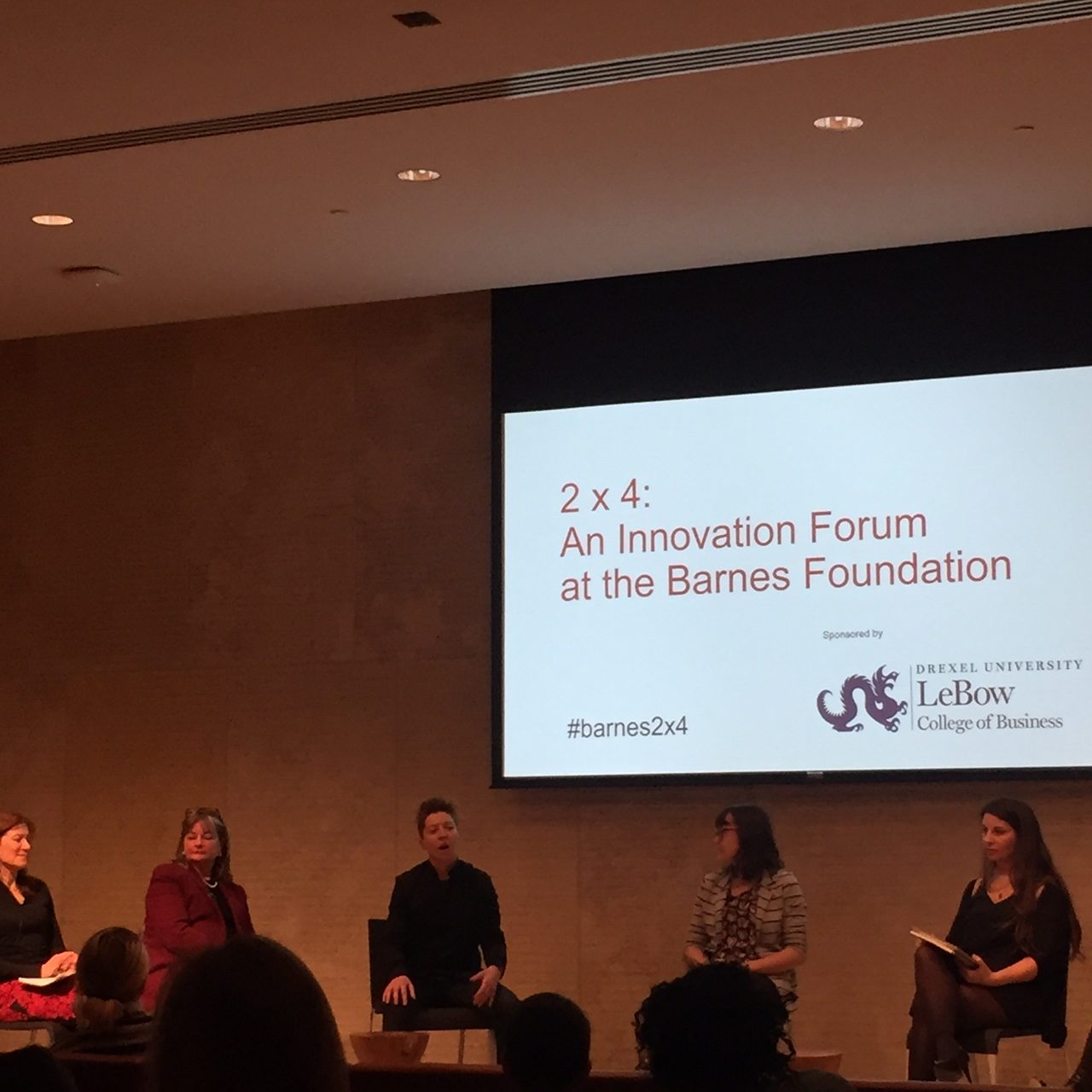In a theater packed with an audience so dedicated that they remained undeterred by an emergency fire alarm, the energetic panelists lobbed a lofty goal from the very start: how can the Barnes audience better “mirror the diversity of Philadelphia”?
The 2×4 is an annual forum on audience development at the Barnes Foundation, a 95-year-old fine arts and horticultural museum. This year, two local leaders, Comcast’s VP of Diversity and Inclusion Maria Arias and the Free Library of Philadelphia’s President and Director Siobhan Reardon, responded to data and proposals presented by four members of Drexel University’s ExCITe Center: Nicole Feller-Johnson, Maren Larsen, Thanh (My) Nguyen and Kenneth Nimley. Arias and Reardon opened the conversation by adjusting the focus on two important diversity values: access and awareness.
With the aim of coming to “data-driven decisions,” the panelists presented survey findings from BeHeardPhilly, a tool operated by Temple University’s Institute for Survey Research that presented some thought-provoking conclusions. Cost, for instance, is a lesser motivator among those who’ve never visited the Barnes, in comparison to the more predominant reasons “don’t like,” “not for me” and “no time.” Nonetheless, BeHeardPhilly surveys also showed that the median income difference between the Barnes audience and Philadelphia is more than $60,000, with more than double the percentage of Caucasians at the Barnes.
The four students from ExCITe emphasized options of blending art and technology for a two-part solution: cultivating the message of “I Belong in the Barnes” and empowering communities to participate in the arts. Solutions included art penpals, a digital platform where residents on opposite sides of the city can engage in dialogue on art before they see the physical work at the Barnes. In response, the panelists discussed how to “tease” with the digital: how can digital tools motivate users to come to the physical space of the Barnes?

Drexel’s ExCITe Center students Feller-Johnson, Larsen, Nguyen and Nimley present solutions for greater community engagement at the Barnes. (Courtesy photo)
ExCITe members also gave feedback on strategies for millennial engagement. All six forum members discussed millennial experiences that might be hampered by museum practices such as prohibiting of photography and general “shushing.” They pointed out that a totem or monument could serve as a prominent selfie spot to attract millennial museum-goers, similar to ideas like a digital guestbook or a Barnes Snapchat. Additionally, a physical artist-in-residence studio outside the Barnes would add to its standing as a community hub.
One audience member challenged those onstage to think critically about the “materiality” of art at the Barnes — identify what’s so special about the museum that can’t be taken away from the physical place, then sell that on a digital platform. The audience member also suggested the possibility of connecting with artists who are already “deeply rooted” in communities, so that the intersection in art will appeal to communities historically missing from the Barnes.
Before you go...
Please consider supporting Technical.ly to keep our independent journalism strong. Unlike most business-focused media outlets, we don’t have a paywall. Instead, we count on your personal and organizational support.
Join our growing Slack community
Join 5,000 tech professionals and entrepreneurs in our community Slack today!

Supreme Court upholds TikTok ban, as creators and communities brace for impact

I’m a teenager who quit social media — and I’ve never been happier

Four ways Trump could upend the tech world in his first 100 days

